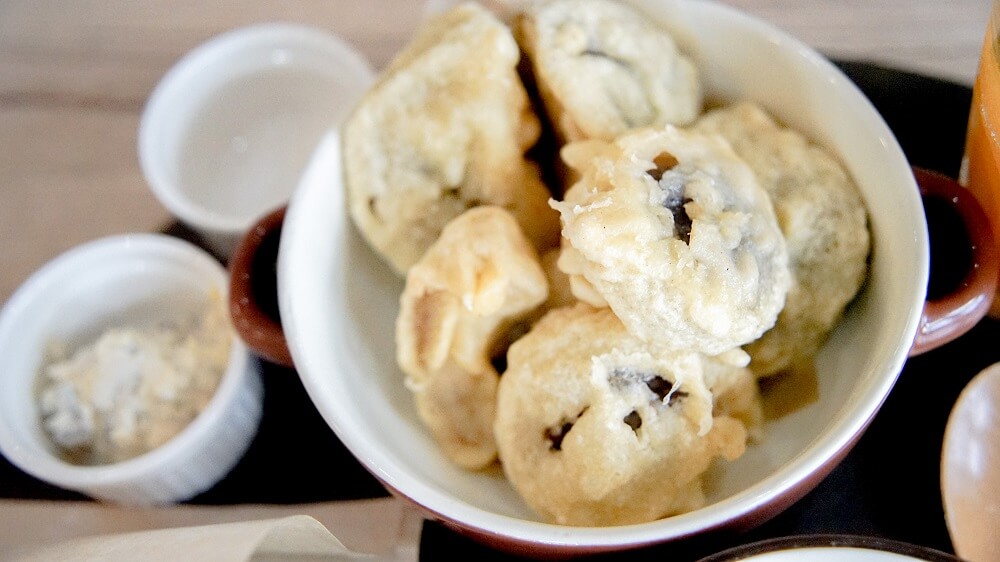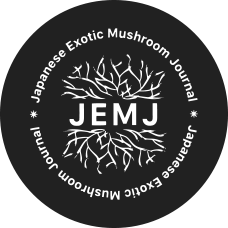Login or Subscribe
You must be logged in to access this content
Subscribe for free access to Japanese Exotic Mushroom Journal and gain insider knowledge on effective cultivation methods for Japanese mushroom species. Elevate your skills with expert tips and innovative technologies to master the art of growing Japanese exotic mushrooms.
◆ Discover exclusive Japanese mushroom cultivation techniques
◆ Learn innovative methods to enhance mushroom quality and yield
◆ Tap into Japan's rich heritage for unique growing insights
◆ Discover exclusive Japanese mushroom cultivation techniques
◆ Learn innovative methods to enhance mushroom quality and yield
◆ Tap into Japan's rich heritage for unique growing insights
Subscribe Now for Free Login
Fall Food with a Mushroom Twist
- In much of the northern hemisphere, Fall is a time of year that people associate with hearty savory food, family gatherings, and, of course mushrooms. Peak foraging periods generally begin in early Fall and continue up past the first frosts. Fall is also a period of increased appetite (the Japanese call it shokuyoku no aki, which means Fall cravings), theorized to do with the reduced UV radiation and shorter days causing changes to the human body’s metabolism and hormonal balance.The combination of cooler temperatures, more hot food, more home meals and big celebratory spreads, make the Fall season critical for mushroom farmers, all the more for those whose focus is in direct-to-consumer sales. Even restaurant sales are likely to see upticks as restaurants switch in seasonal Fall dishes, which should contain mushrooms! In Japan, demand spikes sharply starting in October, and then continues rising steadily until December, when it spikes again and the high demand continues until the beginning of February when it starts to slide down again, gradually at first and then rapidly after the arrival of Spring.A big part of my series on cooking I intentionally designed around novice cooking, but I was also consciously trying to break the conception that mushrooms have to be used as “mushroom” dishes. I think that yes, buying 2 pounds of lion’s mane to make a bunch of plant-based substitutes for chicken burgers is an easy sell that is quite lucrative for a farm, but my take was to think about how to pitch people on a daily-100 gram (3.5 ounces) serving. For a farm, a big sale once or twice a month, versus consistent daily sales, is more difficult from a business management perspective and ultimately limits the potential market. I mean, ideally, for any industry heavy users are going to be the bread and butter, which means the people who are going to buy two pounds of lion’s mane or oyster or shiitake mushrooms from you every week, but for specialty varieties that’s often a very small niche, and one I’m not sure is sustainable for healthy long-term development of the market. Finding a way to sell 6~8 ounce (150~200 gram) packs of specialty mushrooms to people not extremely familiar with them, and to sustain that with two plus sales a week is a tall task but an important one.
- I’m talking maitake green bean casserole or even better, maitake stuffing, even something as crazy and exotic as julienned wood ears in jambalaya (which I’ve done; it works very well). I am seeing a missed opportunity in pitching mushrooms as a small, unobtrusive, healthy addition to daily diets. Japan’s Kinoko Meister Association, a mushroom-promoting and educational organization, highlights in its training the wide body of epidemiological studies and nutrition research done in Japan that show the various health benefits from eating mushrooms require at least 50 grams of mushroom consumption daily and being consistent about this dietary addition. Adjacent research into cacao polyphenols, and coffee and olive oil as well, show that while the health benefits appear to be statistically significant, they require extremely consistent consumption patterns otherwise most of the effect disappears. Well, hardly anyone would be surprised to discover their medicine doesn’t work when they only take it three times a week, but we are starting to learn that nutrition works in a similar way, though with a lot of different biological pathways, whose complexity I have outlined a little bit in past issues.There’s a good argument for mushrooms as an affordable health food, and with so many different varieties, it’s easy to incorporate them into daily diet. So get out there and sell mushrooms as a staple; bring mushroom foods to festivals and county fairs and farmer’s markets. Grab new buyers and reinforce existing ones. Showcase a scrumptious homemade chicken noodle soup with chestnut mushrooms (Pholiota adiposa, not brown button mushrooms, which are often also called chestnut mushrooms) in it, or minestrone soup with oyster mushrooms, or king oyster and kimchi egg-fried rice that only takes 15 minutes to make. Even big farms and big operations can benefit by this kind of content marketing and maybe more with the right plugins with the right influencers. I like to never lose track of what the business is really about: which is creating healthy and delicious food. It’s easy to get lost in the machinery, to get lost in the substrate, to get lost in the considerable complexity and expertise that running even a small local mushroom require that one can get burnt out and forget the real people, families, with children and dogs and busy schedules.
- If any readers have interesting examples of their Fall promotions and recipes, please send them to us at <jemj@salai.jp> or tag our Instagram page <j.e.mjournal>. We are more than happy to highlight them in the journal and on our new website. The whole point of moving the project in the direction we have is to make it more collaborative and more open. We want to connect with people around the world who love and are fascinated by fungi, regardless of whether it’s a hobby, a career, or an academic pursuit.






 1-2-13 Honmachi, Komoro city, Nagano prefecture, Japan 384-0026
1-2-13 Honmachi, Komoro city, Nagano prefecture, Japan 384-0026